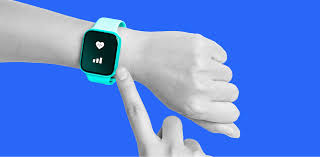The future of healthcare isn’t just in hospitals — it’s now on our wrists, fingers, and even skin.
From smartwatches to health rings and biometric patches, wearable technology is revolutionizing how we monitor, manage, and improve our well-being. These devices are more than just gadgets — they are becoming early warning systems that can predict health conditions, track vital signs, and even save lives.
Let’s dive into how wearable health tech is changing the way we live and what the future holds for this fast-growing industry.
📈 The Rise of Wearable Health Technology
Wearable health devices started as basic fitness trackers. But today, they’ve evolved into medical-grade tools that offer real-time insights into your body.
The global wearable tech market is booming — expected to surpass $100 billion by 2026 — driven by increasing health awareness, chronic disease monitoring, and smart AI-powered analytics.
Whether you’re a fitness junkie, a busy professional, or someone managing a health condition, these smart devices are becoming a must-have.
🔍 Types of Wearable Health Devices
Here are the most popular and innovative types of wearable tech in health today:
1. Smartwatches: Your Health Assistant on the Wrist
From Apple Watch to Samsung Galaxy Watch and Fitbit, smartwatches now do much more than tell time.
Key Features:
-
Heart rate monitoring
-
Sleep tracking
-
Blood oxygen (SpO2) levels
-
ECG (Electrocardiogram)
-
Fall detection and emergency SOS
-
Fitness and calorie tracking
Advanced Uses:
-
The Apple Watch Series 9 can detect atrial fibrillation, send irregular heartbeat notifications, and track temperature changes in women’s cycles.
-
Fitbit Sense tracks skin temperature and electrodermal activity to measure stress.
Smartwatches are becoming mini-clinics on your wrist.
2. Health Rings: Small Size, Big Impact
Health rings like Oura Ring or Motiv Ring are sleek and powerful. You wear them like regular jewelry — but they quietly track your body 24/7.
Key Features:
-
Sleep stages and quality
-
Heart rate variability (HRV)
-
Blood oxygen levels
-
Body temperature
-
Activity levels
Why They Matter:
Oura Ring is so precise, it was used by the NBA and UFC to help monitor players during COVID-19 outbreaks — even detecting early signs of infection before symptoms appeared.
3. Smart Patches: Stick and Monitor
Wearable patches are the latest innovation in real-time health tracking. These small, flexible devices stick to your skin like a Band-Aid but act like high-tech sensors.
Key Features:
-
Continuous glucose monitoring (for diabetics)
-
Blood pressure tracking
-
Hydration and electrolyte levels
-
Sweat and skin chemical analysis
Popular Devices:
-
Freestyle Libre and Dexcom G7 are popular CGM (continuous glucose monitors) for managing diabetes.
-
BioIntelliSense BioSticker is used in hospitals to remotely monitor respiratory rate, heart rate, and body position.
These patches are transforming chronic disease care, especially for patients who need continuous, non-invasive monitoring.
🧠 How Wearables Predict Health Conditions
Thanks to AI and big data, these wearables aren’t just trackers — they are now predictors of potential health issues.
Wearables use data from:
-
Heart rhythms
-
Sleep disturbances
-
Body temperature fluctuations
-
Blood oxygen drops
To detect:
-
Sleep apnea
-
Arrhythmias
-
Stress and anxiety patterns
-
Infections (like early signs of flu or COVID)
-
Fertility and ovulation cycles
Some studies show that AI-powered wearables can detect illness up to 3 days before symptoms start, giving users time to act early and seek care.
🏥 Real-World Impact & Use Cases
-
Remote Patient Monitoring: Hospitals use wearables to track discharged patients and reduce readmission rates.
-
Elderly Care: Wearables alert caregivers when seniors fall, become inactive, or show unusual vitals.
-
Fitness & Lifestyle Coaching: Personalized insights help users optimize workouts, manage stress, and improve sleep.
-
Mental Health: Mood-tracking wearables assess stress levels based on HRV and breathing patterns.
🔐 What About Privacy?
With great data comes great responsibility.
Wearables collect sensitive health data, which raises questions about:
-
Who owns the data?
-
How is it stored and shared?
-
Can it be used for insurance or employment decisions?
Leading brands use end-to-end encryption and allow users to control sharing permissions. But it’s essential for users to stay informed about privacy policies and app integrations.
🔮 The Future of Wearable Health Tech
Expect wearables to get:
-
Smaller and smarter — even implantable
-
More personalized — adapting to your unique bio-patterns
-
Integrated with telemedicine — share vitals with doctors instantly
-
Powered by AI — offering health predictions and early diagnostics
Innovations to watch:
-
Smart contact lenses that track blood glucose
-
Skin patches that deliver medicine based on real-time vitals
-
AI companions that monitor mental wellness through wearable signals
✅ Final Thoughts: Your Body, Your Dashboard
Wearable health tech is empowering people like never before. With real-time data and predictive analytics, you don’t just track — you understand your health on a deeper level.
Whether you’re training for a marathon, managing a health condition, or just want better sleep, there’s a wearable device that can help you take control of your body like a pro.
Because in this connected world, your health is your data — and your data is your power.






0 Comments